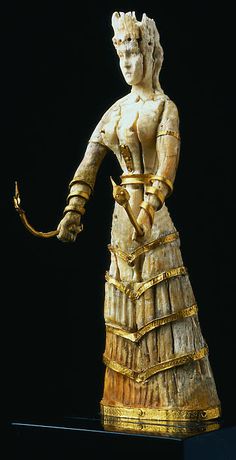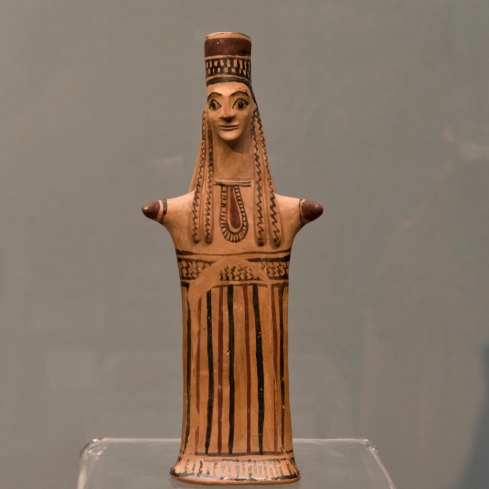
Figure of Ceres with a Polos on her head (2nd century A.D, Roman)bronze
Greco-Roman civilization featured many objects and icons which are instantly familiar to us today. We know all about cornucopias, tridents, and the fasces (Hey! Why are those on the official seal of the U.S. Senate, anyway?). Yet other common symbols from that world are perplexing to us today–like the lituus which represented augury in classical mythology. Today’s post features a symbol which may or may not have made sense to the Greeks and Romans, but which was instantly understood in the context of their religion—the polos. The polos was a cylindrical crown worn by goddesses of supreme importance: Rhea, Hera, Demeter, Aphrodite, and Artemis (though not Athena, apparently), however it was seemingly not worn by queens or high status women in the real world after the 5th century. We know what it looked like, but we are perplexed as to what it was made of (insomuch as it was an object of the physical world at all).

Archaeological finds from the Mycenaean era (1600BC-1200BC) indicate that living women of the ancient palace kingdoms of Greece and Crete once wore these headdresses. You can see a polos above on a Mycenaean figure—yet by the classical Greek era, these do not seem to be worn in the real world.

Examples from statues of Cybele and Rhea make it seem almost as though it was woven or carved out of some organic material. Perhaps the Polos was a symbol of fertility and abundance (which would expliain why the virginal Artemis of Ephesus wears such a thing yet the virginal Athena does not.

Artemis of Ephesus. Statue from the Amphitheater of Lepcis Magna
It is possible that the polos was a cultural object which came into Greece from the near east (there are certainly equivalent crowns in Mesopotamian and Persian art) and existed in religion but not in common culture (Christianity is filled with such symbols, when you think about it). However it seems more likely to me that the polos was important to the Greeks because it was ancient and mysterious. It had the same place in their culture that their gods and symbols do in ours—a venerable symbol of otherworldly power

Seated Aphrodite wearing a high polos (4th century B.C.) terracotta

Leave a comment
Comments feed for this article